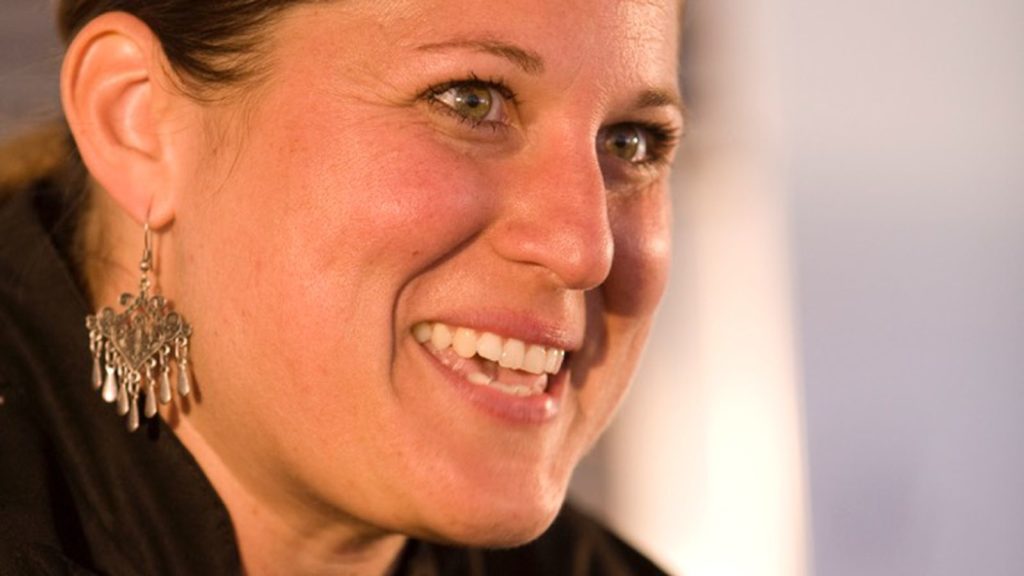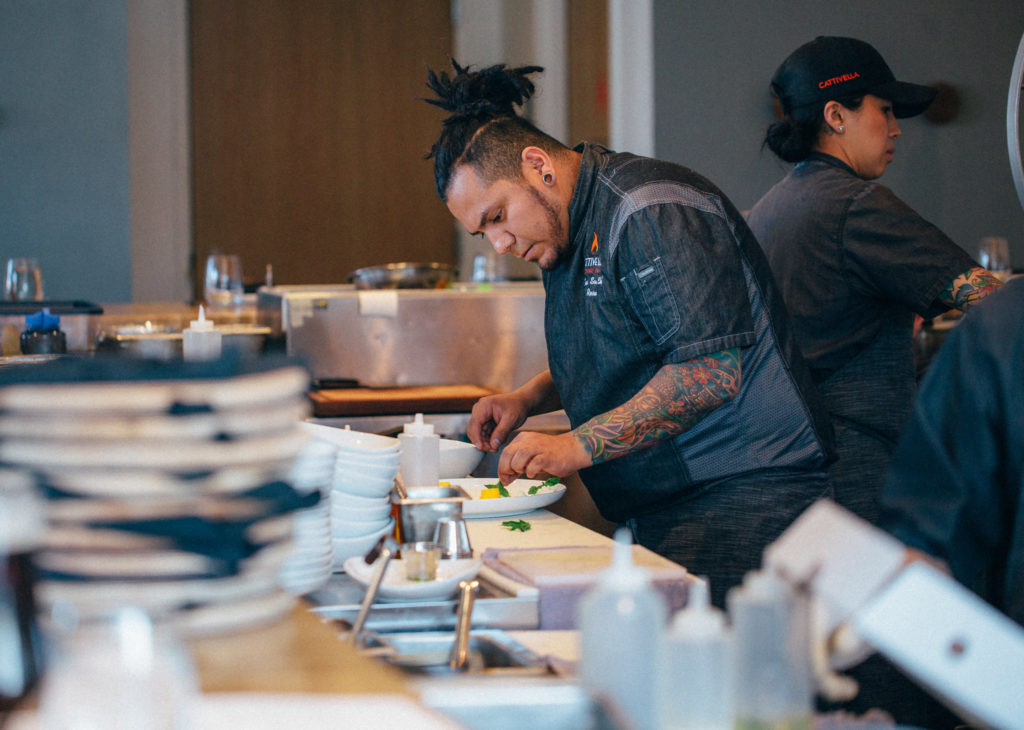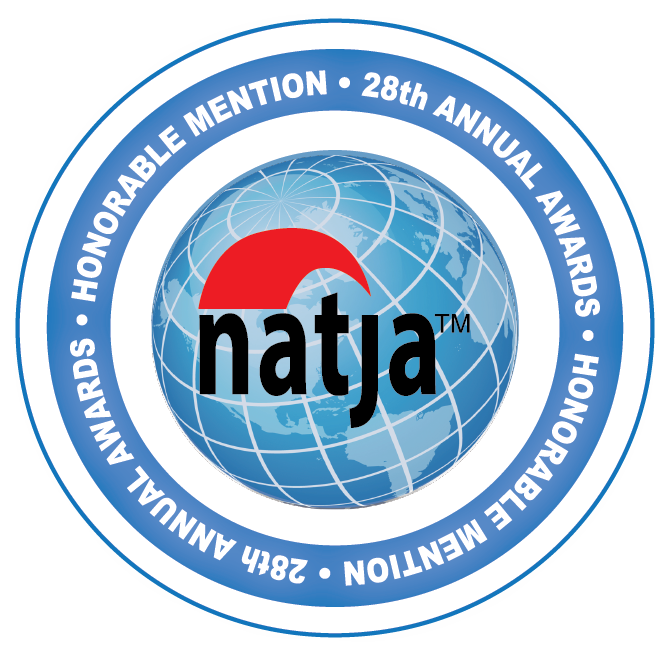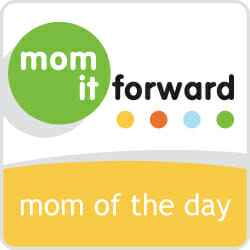Can you name a Denver restaurant serving authentic Italian food? Foodies who are well versed in Italian food options frequently single out award-winning chef, Elise Wiggins. Her yearly culinary journeys to Europe bring Italian cuisine to life at Cattivella Wood-Fired Italian.
In previous stories, Wiggins shared two recipes with The Traveling Bornsteins audience. Lo Sfincione, the Original Sicilian Style Pizza and Focaccia di Recco.
Today, Elise Wiggins and her sous chef, Zuri Resendiz, visit The Traveling Bornstein site so readers can better understand why Wiggins has made a notable mark on Denver’s restaurant scene.

How does your father’s southern heritage and your mother’s love of cooking, especially Italian food, influence your cooking philosophy?
Both my father and mother were the foundation to my success today. My father taught me where food comes from and how to procure it through hunting. His biggest lesson was to not waste an animal’s life. If I hunted, he asked me to practice my aim before I attempt to take life. By being a good marksman, I would not be making the animal suffer with a bad shot.
My mother taught me about travel and culture and and all the wonderful experiences that are out there. The one resinating with me the most was her trips to Italy. I fell in love with the food, the stories, the architecture and the countryside at a very young age.
What were the three most important things you learned from attending culinary school in Colorado?
The history of organized food preparation, the importance of precision cooking, and mother sauces.
Can you identify a couple of chefs who have impacted your career and describe their influence?
Julia Childs— I was hooked watching her cook things that I’d never seen before in my household. She was exceptionally funny. I wanted to be like her…funny, entertaining, and educational. The other chef was Alice Waters. Her appreciation for classic cooking methods and using the healthiest ingredients resonated with me because of my southern upbringing.
When you took over Chef Jennifer Jasinski’s position at Panzano, how did you handle the exceedingly high expectations she left in her wake?
I teased everyone when they said, ” wow you have big shoes to fill.” I followed with “nope…no big shoes…..thigh high boots.”
I was certainly nervous. I’m a competitive woman and I love a good challenge. I knew my style of food would be different. It really wasn’t a competition in my eyes for great tasting food. It was a competition to make the business as successful as possible under my name. I did that.
When I started our annual revenue was $4.5 million. When I left it was 9.8 million. That’s a huge feat in a restaurant that was 20 years old.

After becoming a successful chef at Panzano, what initiated your decision to start your own restaurant and to have Zuri Resendiz as your Sous Chef?
I have always wanted my own restaurant. I was waiting to have the right level of experience as well as the right space. I also didn’t want “investors.” The deals I’ve been offered in the past (that I know for a fact other chefs have taken) are where the investor owns the business and the chef gets a percentage of profit after the investor gets 79% of profits after all bills are paid and repairs etc.
Restaurants run on super thin margins so I didn’t want to see my hard earned money go to other people.
I brought Zuri on because he was strong with cooking talent, loyal, intelligent and driven for more success.
Zuri, how did your early experience in Mexico influence your current cooking style?
In Mexico, food was always around me. Mexico City is the cradle of flavors. As I became a chef, I understood that culture and food go hand in hand. It is really important to respect not only your food but the process of it as well as the story behind it
Zuri, did you encounter any challenges when you left Mexico City and began working in Denver?
English language skills were the hardest to learn. Even today my accent is super strong. With partial English fluency, I started in the dish pit. From that position, I learned all of the recipes’ ingredients. I eventually moved to better and better positions. I learned most of my kitchen vocabulary before I even put English sentences together.
Cattivella translates “naughty girl.” Can you explain the significance of this name?
When I was looking for a name there are so many Italian food, romance, love, city names etc taken for restaurants. I wanted to be the ONLY restaurant in the world to have my restaurant’s name. So instead of looking at food names, I started to look at myself. My character has always been tenacious and mischievous. So Cattivella came up.
I reached out to one of the Italian chefs I studied with to verify that the word doesn’t refer to a hooker. He said it’s a very endearing name for young mischievous girls.
He shared a great back story. It’s a bit long. I’ll just give you the shortened version. “A little girl wants her mother’s chocolate that are hidden on the kitchen counter. The mother tells her no, only one per night. She still creeps in while her mom is doing dishes and sneakily grabs one out of the box. The mother knowing what she was doing spun around and told her not to pop the chocolate into her mouth or she’ll get punished. The girl looks at her mom and then at the chocolate. Next, she pops it into her mouth.”
Obviously it was worth the punishment.
Can you describe three benefits of taking an annual pilgrimage to Italy to work with Italian chefs and your favorite Italian city?
- To learn the authenticity of their cooking.
- To learn the history of dishes.
- To learn more about the culture of the Italian way.
- Plus, my favorite city is Florence.
I live in Stapleton and my neighbors were always begging me to open a restaurant. Prior to opening Cattivella, the neighborhood had nothing but chain restaurants. The area is filled with well traveled people who recognize authentic Italian food.
Even though your restaurant has only been open a few years, your Italian cuisine has been singled out on a long list of culinary awards. How does your food stand out from your competitors?
My goal since I moved to Colorado was to separate myself from other Italian restaurants by serving authentic dishes that people don’t normally see in Italian restaurants in Denver and throughout the United States. This is another reason why I go to Italy every year to study. I ask chefs for rare unknown dishes and to send me to the place I can learn about them. Many of my dishes date back to the 14th-17th centuries.
You know it’s funny when people say “where’s the spaghetti and meatballs. I know nothing on this menu……it’s not Italian.”
I have the staff inform the guests that there are translations, explanations of the ingredients, and the history of the dishes on the back of the menu. That seems to help. Now people just trust me that it’s going to be good and that they are going on an authentic Italian adventure….right here in Stapleton.
Can you provide an overview of your Rocky Mountain PBS series, Roots to Ranches?
Roots to Ranches is a show where I take people on a physical journey to procure foods thru foraging, hunting, regenerative ranching, and farming. I want people to learn about what’s out in the wild and in season to harvest for food. I want them to learn there are better practices for the animals than the mass production of animal proteins. The show is perfect for what’s happening right now with the shortage of foods.
When Denver restaurants reopen, will your restaurants be implementing any new health and safety standards?
Yes we will. We have already increased the spacing of our tables both inside and out. I don’t know how other restaurants are going to survive. I happen to have a huge patio so it will help with spacing but my interior seating with the six foot distancing has me down from 117 covers to only 24.
We will be managing the spacing of our guests, as well as other COVID-19 regulations. My payroll will be increasing because I need to adding extensive cleaning steps during and after guests dine with us.
Are you contemplating any other changes in the near future or is there anything that you’d like to add?
Since carry out and delivery are predicted to increase by 68%, I’m looking into buying two electric delivery street legal club cars. I’m also looking into purchasing a food truck. I’m trying to push the city to allow food trucks to sell their foods at parks. This way we can sell more food since we are limited to 25% capacity.
BIO
When Sandy isn’t trekking or writing in the Colorado, she is traveling. She has visited more than 40 countries and lived as an international teacher in Bangalore, India. Sandy’s award-winning book, May This Be the Best Year of Your Life, is a resource for people contemplating an expat lifestyle and living outside their comfort zone.
Sandy’s lifestyle and travel experiences are frequently shared with international and domestic online sites and print media. She has contributed stories to Hemispheres, Destinations Magazine, KUHL’s Born in the Mountain blog, Grand Magazine, Wandering Educators, Golden Living, AARP, Hadassah magazine, Localliz, One Travel, Miles Away, Canadian Jewish News, Getting On Travel, Far and Wide, Colorado Parent, Traveler Confidential, Family Circle- Momster, and others.













Leave a Reply